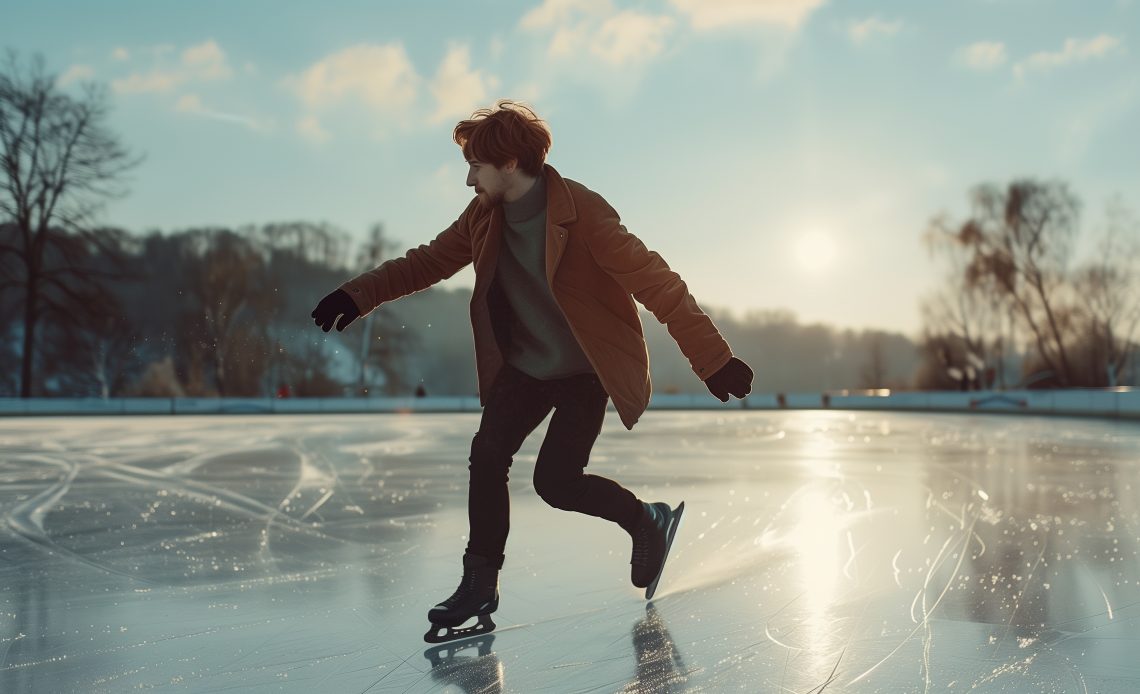
By a Teacher Who Bruised More Than Her Ego When I was a child, one movie lit up my imagination: Castelos de Gelo (yes, I do mean that dramatic 80s movie about a girl who becomes blind but still manages to ice skate beautifully). I watched it so often, I am sure it left an imprint on my TV. The movie became part of my life. I didn’t care how unrealistic it was. I was hooked. At twelve years old, I decided I was destined to learn how to ice skate.
This, of course, was a flawless plan, if you manage to look past the fact that I lived in Brazil, where the closest thing to an ice rink was the freezer section at the supermarket.
Fast forward a few decades, and the dream still had hold of me. I had never pursued it, but I felt the fantasy pulling me. At 47, I decided to stop waiting for snow in São Paulo and finally chase my ice-cold wish. I signed up for skating lessons at a new ice rink that opened near my house.
It was magical… for about 20 minutes. On day three, intoxicated with excitement (and, let’s be honest, a bit of delusion), I attempted a heroic glide and landed right on my behind. Diagnosis: fractured coccyx. I didn’t even know I had a coccyx until that moment of betrayal. Still, I returned to the ice. For the first time in years, I was reminded of what it feels like to try something for the first time. Learning something out of your comfort zone, something terrifying, humbling, and physically painful, is what it truly means to be a beginner.
My skating coach had the patience of a saint and the drilling routine of a military commander. Over and over again, I’d repeat the same awkward little move until it didn’t feel so awkward anymore. And then I had an ah-ha moment – isn’t this what I tell my students to do every day?
As a language teacher, I used to believe that once a student “got it,” we could move on. That a correctly formed sentence meant true understanding. But skating showed me the truth: just because I managed to stay upright once didn’t mean I could do it again. Mastery requires drilling. Repetition. Sweat. (And occasionally, tears).
Since then, I’ve become both softer and stricter in the classroom. Softer, because I now understand how terrifying it is to be the beginner, the adult wobbling while everyone else seems to glide effortlessly. And stricter, because I now know, from personal (and painfully literal) experience, that there really is no free lunch in learning. Whether it’s skating or speaking English, progress demands consistency, courage, and practice, lots of it.
Now, I tell my students about my skating saga. They love picturing their teacher in a helmet, arms flailing, wobbling across the ice like a confused flamingo. But I also tell them this: learning isn’t supposed to be glamorous. It’s supposed to be awkward, honest, a little ridiculous—and worth every bruise.
So if you see a woman on the rink, skating like her joints were installed backwards but with a huge smile on her face—that’s me. Living my childhood dream, straight from the SBT archives, and teaching better because of it.

